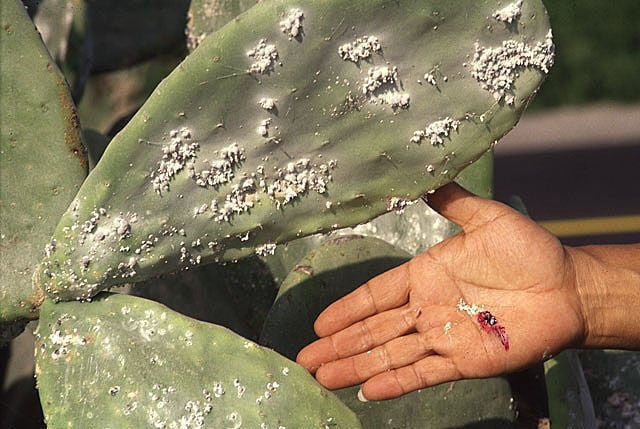Q: I have a prickly pear with an increasing number of chalky-white splotches forming on the pads. Is this a fungus? Can it be treated? Should I just get rid of the plant? (It isn’t very big).
A: What you are seeing is signs of cochineal-scale insects (Dactylopius coccus) on your prickly pear cactus (Opuntia species). These insects produce a white waxy covering where they feed to protect themselves from predators and the environment. It can be treated with insecticides including a 1 percent solution of horticultural oil, but treating it is optional. Depending on how bad the infestation has grown, you can also leave it alone, hose it off, or in extreme cases remove infested pads. It may spread to nearby prickly pear cacti so doing nothing has its risks but the damage is usually minor.
These insects are endemic to our region and fairly commonly seen on these cacti. The interesting use of these scale insects to produce a red dye might make you think twice about keeping them around. The traditional use by indigenous people was for dying fabric. Other enterprising people later used it as a dye in things such as cosmetics and food. For some reason, not everyone likes the idea of eating insects, so they don’t usually call it that on the food or lipstick labels.
Peter L. Warren is the urban horticulture agent for the Pima County Cooperative Extension and the University of Arizona. Questions may be emailed to





